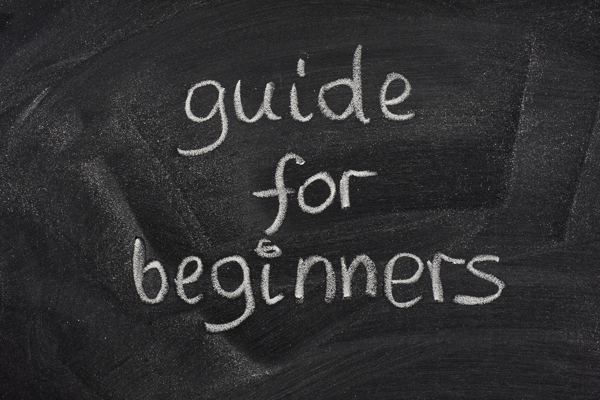This in-depth article will help educate beginners to the world of daily fantasy sports (DFS). It will show you the thought process of a professional DFS player, and the intricacies needed to build an effective NBA daily fantasy basketball lineup.
With the all star breakup upon us, I am stepping back and analyzing my nightly process since I have the time to do so. I figured the best way for me to help is to walk you through how I do my own rosters, so that you can see the thought process, tweak it a little, and make it your own. If you want to be a winning player than you need to do your research. Here’s how I go about making a daily fantasy basketball lineup.

DFS BEGINNER’S GUIDE: WHERE TO START?
Pick a Site
I do some writing for Draft Kings Playbook and play NBA there on any night with more than 5 games. Some people like small slates and others prefer larger ones, but we all know which we have more success playing. Concentrate on those slates. The idea is to put your money where you have the best chance for a return so play to your strengths. I play on Fantasy Aces and Fan Duel as well as DraftKings, but for starting my research I find DraftKings is the easiest to navigate. I will open up the app and click on the free tournament for that night so I can start building my lineup there and saving it. Once you have one it is so much easier to enter it into multiple tournaments through the lobby.
Research Material
After I have the game open, I open up a few of the research tools I use when I go through and analyze the games. The first one I like to use is Vegasinsider.com. Here you can check the Vegas lines and movements from various sportsbooks. There’s another article on the site that touch on how to use these lines, but basically I try to target the games with the highest totals and the closest spreads. Vegas insider also has a match ups section where they go over the last few games for each team as well as the last few matchups against each other. They also have a pretty good write up each day with how the teams have been playing and some of the news to know. There’s a lot of good stuff you can use for daily fantasy all in one place which is why it is my favorite. If you do research the night before and need lines when Vegas insider has not posted them, the place to go is masseyratings.com. They usually have a pretty accurate line set up even before Vegas posts them.
Another site I use is one called Popcornmachine.net. This is a good place to go if you want to check minutes and rotations for NBA lineups. I hear some people talk about the NBAwowy site which has some of the same information, but the bar charts on Popcornmachine.net make it easier for me to visualize the substitution patterns. This is especially important if you want to look at minutes due to injuries. When injuries pop up the minutes always change and how they get distributed out is very important if you are trying to predict which guy benefits from it the most. Finding those guys early while the price and ownership are still low is a key to victory.
Injury News
There’s a million places to track this stuff, but my favorite way of doing it is twitter. Open a twitter account and follow a bunch of the sites and services that tweet about NBA DFS. I find the most accurate and up to date twitter follow is basketball monster. They usually are one of the first to tweet out injury news so give them a follow. Late breaking news in NBA DFS opens up so many value plays and increased usage opportunities that you are at a disadvantage if you can not be on top of it.
Get my cheatsheet and learn how I achieve a 65% win rate in DFS NBA. Learn more to improve your odds on winning.
THE PROCESS
The first thing you need to know is what score you want to target. Let’s use DraftKings as our example. If I am playing a cash game I want to try for a score of 250+ to make sure I am in the money. That means on a $50,000 salary cap I need a minimum of five points per $1000 of cost from every player I roster. This is for 50/50s, H2Hs and things like that. This is a minimum requirement for me. I want guys that I can safely assume will reach this score almost all the time. If you are playing a GPP on DraftKings you need to shoot for guys who can get you over six points per $1000 of cost. If you do that you end up with a score over 300 which cashes in GPPs every night. The buy in level, pool size, and site you play on will dictate what your target score needs to be. Pay attention and track what score is needed to win and cash nightly in the tournaments you enter. This way you will know what you need.
Once you have your target you can begin to look at the players and salaries. I like to go game by game on DraftKings highlighting one game box and then going through each match up position by position. I begin by jotting down the names of the guys I think can reach the levels I need today to pay themselves off. If the first game is Denver @ Chicago, I will highlight that box so I am only seeing the players from that game in the queue. I will then look at Vegas Insider for the totals and spread. 200 is my key Over/Under number for NBA. Games over the 200 mark are good to target and the farther from that number you get to the downside the less interesting the players in that game become. On smaller slate nights you may still need to use some, but on a 12 game slate with five 200+ point totals there’s always better options.
After looking at the betting lines, I usually have a Defense vs Position (DvP) chart open as well. The one I use is from DFSReport.com. There’s a bunch of different DFS related websites that have this information, so choose one you trust and go with it. Some are behind paywalls, but DFSReport is not, which is why I use that one. I will look at the match ups for those players and see who is in a good spot. I will use a combination of positive match up data, high totals with close spreads, and recent game logs to determine if a player can get me the 5-6 times value I need on most sites. The ones that do I write the names down on my short list.
For injuries I follow the twitter feed I have with all the sites, beat writers, and teams to see if that opens up minutes for anybody and I use the popcornmachine.net to determine who has benefited in recent games if those injuries are prolonged ones. You can open each of those research tools I mentioned in different tabs before you start looking at players so you can easily switch back and forth between them. I do this game by game until I have a list of players I like for that evening at prices I think are too cheap.

Roster Construction
Once I have my list I am ready to build my rosters. This is the hardest part of DFS in my opinion. There’s various lines of thinking on this, but here’s how I normally do it. I start by putting in the guys I absolutely have to have on that day. This is usually a combination of a few higher priced studs I think are in good spots and a couple value guys who I think are locks to get me the five to six times value or more I need from them. This usually fills out half of my roster or more and is the easiest part of roster construction. When putting these core guys in my lineup I rarely care if I think they will be high owned or not. These are the guys I consider must plays and if I did my homework right I would think other people found their way to these guys as well. There’s various game theory arguments you can make for GPPs here, but for a cash game you want the most highly probable team to score at least whatever you target number is. Therefore it makes no sense to me to fade anyone in cash games for fear of high ownership.
At this point you have a shell of a team. Probably 4 or 5 guys with three or four open spots. This is where the money is made. As I said those core guys you used are also probably highly used by others. Maybe not 40-60% owned guys, but most will be in the 20% range more or less.
At this point in roster construction I find myself playing the comparison game. The comparison game is a great way to fill out a roster and is my favorite part of DFS. Here’s the concept behind it. When I lay it out you will all understand what I am talking about here. You have a SF, F, and Util spot available on DraftKings. You have $18,000 to spend. How is the best way to spend it? This is the situation many of you probably find yourself in nightly and many times those 3 guys are the difference between a top 10 finish or bubbling right outside the money. This is where I use a projection system to help me narrow down my plays. Many sites offer them. Some are behind paywalls and others are free. Again I write and helped build the free one we use at DFSReport.com, so I am partial to it, but every major site from Rotowire, to basketball monster, to Rotogrinders has one of their own. Find a site you trust and are comfortable with and use it. The Projections give you an idea of probable outcomes based off factors like recent performance, match up, DvP, game totals and more. There’s endless add ons and filters and tweaks the sites use so find one you trust and stick with it.
In order to play the comparison game I want to fit guys below that dollar amount together and compare them to see which group has the best chance of reaching my goals. You can break down this money in many ways. $18,000 could pay for one stud and two $4000-$5000 value plays who may be getting increased minutes due to injury. It could also get me three guys in the $5700-$6300 mid range that have good match ups and a chance to reach value. Which pairings to use depends on what we are looking for here. In order to better illustrate this, let me use real names so you can see what I am saying:
James Harden is a $10K player who has been scoring 50+ fantasy points pretty regularly. If you wanted to add him to this roster, you are left with about $8000 for two players. Kris Humprhries may be hurt on the day and Nene at $4200 should see more minutes. Maybe you add Nene as well and are left with $3800. $3800 is not a ton of money, but maybe there’s another injury situation and a guy at $3800 was getting a bigger opportunity, a guy like Elijah Millsapp. He may only play 25 minutes instead of his usual 12, so his upside is capped, but he could use those extra minutes to reach six times value or more, so he becomes an option. In this case you like have a guy with a 50 point floor and 70 point ceiling in Harden, a 25 point floor and 40 point ceiling in Nene with increased minutes, and then a Wildcard guy like an Elijah Millsapp who may be able to get you 20-25, but also can get you a 10 DK point day just as easily. This would give you a floor of about 85 and a ceiling of about 135. For $18,000 that’s 4.7 to 7.5 points per $1000.
I would than look to go a different route. What if instead I decided to play a Josh Smith at $6100, a Jared Sullinger at $6200, and a Trevor Ariza at $5700. The way each has been playing lately I can surmise that Smith and Sullinger are probably 30 point floors with 40 point ceilings and Ariza is more like a 25 point floor with a 35 point ceiling. That means I get a likely floor of 85 and a ceiling of about 115. Same 4.7 points per $1000 on the bottom end but a lower 6.8 ceiling on the higher end. Now I would have to compare the two for my cash and GPP rosters.
For GPPs we want the upside. Only the top 20% cash, so there’s no need to be conservative and finish in the top half. You get the same amount of money finishing in the 21% percentile in a tournament that pays out top 20% as you do for finishing dead last. Therefore in our example above the higher upside combination is the first one and that is the one you should use. There’s probably a better chance that everyone in the second grouping gets closer to their value numbers, but most likely that group has been in that range in most of the last few games with no upside breakouts. Nene and Elijah Millsapp are riskier, because they usually score less than we are projecting them to today. At the same time though because of the situations they have the chance to really outperform due to their new roles and increased responsibilities. Therefore the lower owned, riskier, and more upside plays for GPPs are where you want to look.
For cash games though it’s very risky to bank on the unknown. For cash games we don’t need to be the highest scorer in 50/50s, we just need to score more than most others do. Ariza, Smith, and Sullinger even on a bad game still have been within 20% of their floors. A Bad game for any of these three is still a decent 20-25 point showing. If one of the others goes off or if both of them play well you can still get that 85 easily and maybe more. In the other example, James Harden could get injured in the second quarter and there would be no way Millsapp and Nene get you to your goal without him. On the flipside if either of those two strike out completely and score a single digit number, which happens a lot in these situations, then even a 60 point explosion by Harden would barely help you get to the minimum. Therefore in the comparison we just did I would prefer the second grouping for my 50/50 entries.
Question Everything
![EintsteinQuestionEverything[1]](http://www.fantasybasketball101.com/wp-content/uploads/2015/02/EintsteinQuestionEverything1.png)
Well now we were able to fill out our rosters depending on game type for GPPs and Cash. The final step for me is part two of the comparison game and that is the question everything phase. Late news may make you feel better or worse about guys you selected, so before line up lock if I am swaying towards a player I have not used I question everything in my line up to see if I am better off making a move. Let’s say you find out Wiggins is out tonight and Kevin Martin at SG is going to get 40 shots against the Lakers horrible defense in a high total game with a low spread. This would now make him an ideal play. You already have a James Harden in your line up now and would not be able to afford him by moving around Nene and Millsapp. So what do you do? What you do is make a new comparison. You liked Nene’s upside so he stays. You can’t afford Martin and Harden, so you remove Millsapp and Harden in order to do so. Now you slide in Martin. Harden and Millsapp would run you about $14000 based off our earlier assumptions, so losing them and replacing with a 6Kish martin probably leaves you 7500-8000 for a second player. This is where I say Question everything. Let’s say you wanted Jimmy Butler to be that guy. The question you now need to ask is how has the better upside? Harden and Millsapp or Martin and Butler. Question Everything. If the answer is yes than make the change. If you feel you still need Harden, then make a different switch.
You may be $1700 short of moving to Martin from Elijah Millsapp, so how do you get there? Well if Harden is out of the question because you need him to stay in, then look elsewhere. Go to your SF slot. Who do you have their and who can you get for $1700 or more cheaper. Did some late value open up? Maybe you had a $8K center and one of the Utah bigs was hurt and you can switch in Gobert or Kanter for the $8K guy. Likely the $8K guy who may be like an Al Jefferson has more upside than the switch you made to Kanter or Gobert at $6300, but the real question here again is: Jefferson/Millsapp >, =, or < Martin/Utah Big. I do this up and down my lineup once I have an original in place. My line up may change three or four times before lock, but it’s almost never a destroy it and start over kind of thing.
The reason I like doing the comparisons is that it helps me narrow down my must plays. When comparing sometimes you like the upside of a guy so much it does not matter who you pair him with. Because you always choose his side. This teaches you two key things about your roster that night. It tells you that you love that player and also that you need to do comparisons without him in them. Knowing who the cornerstones of your roster will be are just as important as knowing who the weak links are. This way you know which guys to work harder trying to find replacements and better combinations for. When you get to a point where you do not think you can improve the upside for a GPP any higher or not be able to reduce the risk of missing your Floor for a cash game then you are ready to hit submit and win all of the monies.
Tired of losing in DFS? Join our private chat group and get the same winning DFS lineups.
![]()

